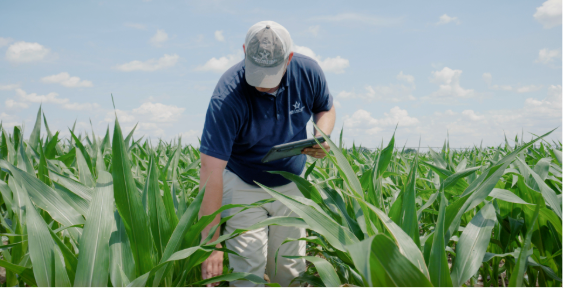AFM NEWS
Spring Planting: A Comprehensive Guide for Maximum Yields

Spring Planting: A Comprehensive Guide for Maximum Yields
As the winter frost thaws and spring settles in, farmers across the country are gearing up for one of the most critical periods of the agricultural calendar: planting season. It’s a time of careful planning, meticulous preparation, and decisive action. To ensure a bountiful harvest in the months to come, farmers must execute a series of essential steps. As such, AFM Ag Services created a comprehensive guide for planting season success.
Conduct Thorough Soil Analysis
Before putting seeds in the ground, it’s crucial to understand the soil’s composition and nutrient levels. Soil testing helps farmers make informed decisions about fertilizer application, soil amendments, and crop selection. At AFM Ag Services, we’re poised to help you conduct precision ag soil sampling and advise you on planting strategies to optimize yield potential and minimize input costs.
Fine-Tune Equipment
Properly functioning machinery is the backbone of efficient planting operations. From tractors and planters to tillage implements, every piece of equipment must be in peak condition to ensure smooth planting operations. Farmers should check for worn-out parts, lubricate moving components, and calibrate planting equipment to achieve precise seed placement and spacing.
Plan Crop Rotation
Crop rotation is a cornerstone of sustainable farming practices, offering numerous benefits such as pest and disease management, improved soil health, and enhanced nutrient cycling. By diversifying crop selection and rotation patterns, farmers can mitigate risks and optimize long-term productivity. Plant crop rotation and incorporating cover crops is an essential part of regenerative agriculture. You can read more about that practice here.
Optimize Seedbed Preparation and Planting Depth
A well-prepared seedbed sets the stage for successful crop establishment and growth. Achieving uniform seed placement and spacing is critical for maximizing crop yields and minimizing competition among plants. Professionals recommend calibrating planting equipment to ensure consistent planting depth and spacing across the field. Planting seeds too shallow or too deep can negatively impact seedling emergence and root development, leading to uneven stands and reduced yields.
Monitor Soil Moisture Levels
Proper soil moisture management is essential for seed germination, root development, and overall crop health. Depending on soil type, weather conditions, and crop requirements, farmers may need to adjust planting schedules or irrigation practices to maintain optimal soil moisture levels. By ensuring adequate soil moisture during the planting phase, farmers can promote uniform seed germination and early-season crop growth.
Watch Out for Pests and Diseases
Early detection and intervention are vital to preventing pest and disease outbreaks that can devastate crops during the growing season. Our Ag Services professionals recommend surveying fields regularly for signs of insect damage, disease symptoms, or weed infestations.
It is also of the utmost importance to create crop production plans. These plans determine which crops will be planted where and the potential needs for the crop. Input timing for pesticides and fertilizer must also be factored in, as well as the costs associated with each. Careful planning will help farmers project revenue and cash flow, especially in a market that has become increasingly saturated. Having enterprise budgets along with a strong crop plan will help ensure success in the field and the financial viability of the operation. By staying vigilant and proactive, farmers can protect their investment and ensure a successful planting season.
Maintain Records and Evaluate Performance
Keeping detailed records and conducting post-planting assessments are essential for continuous improvement and informed decision-making. AFM Ag Services encourages farmers to document planting dates, input applications, and field observations throughout the planting season. After planting is complete, farmers can analyze performance metrics such as emergence rates, stand counts, and weeds to identify strengths and areas for improvement. By evaluating planting season performance and learning from past experiences, farmers can refine their practices and optimize future crop production.
Planting season success hinges on careful planning, diligent preparation, and effective execution. By following these essential steps and incorporating insights from experts like our Farm Services Manager Brandon DuRant, farmers can maximize yield potential, minimize risks, and lay the foundation for a productive growing season ahead.
